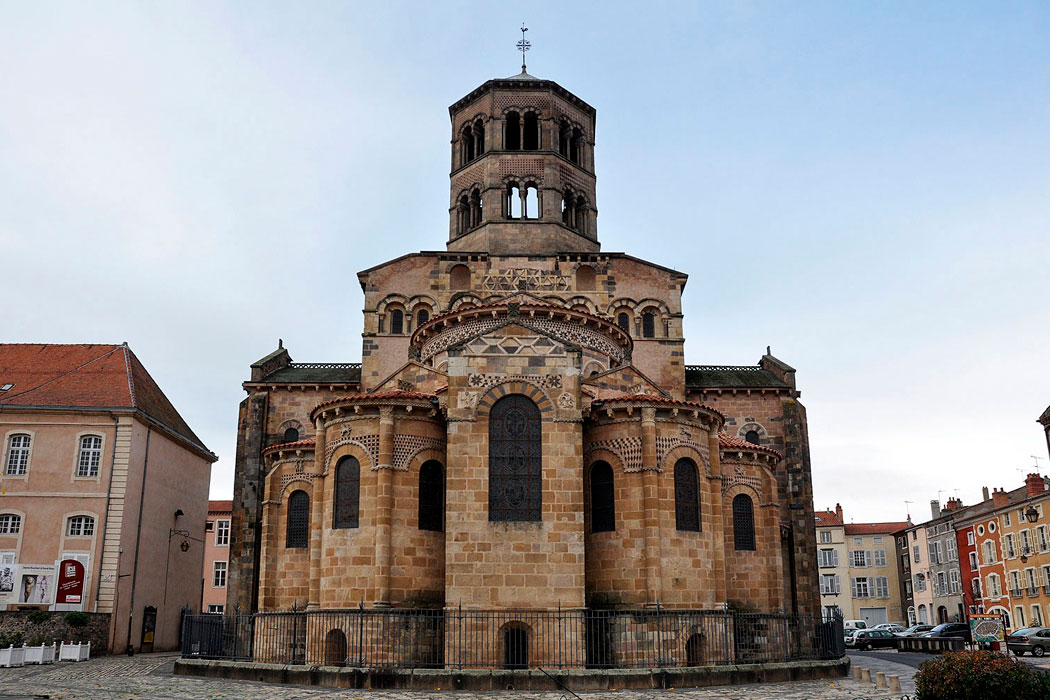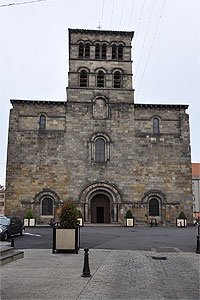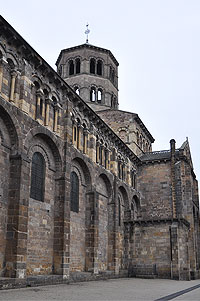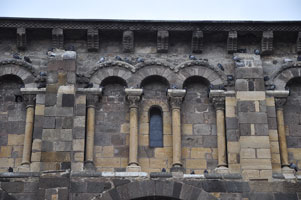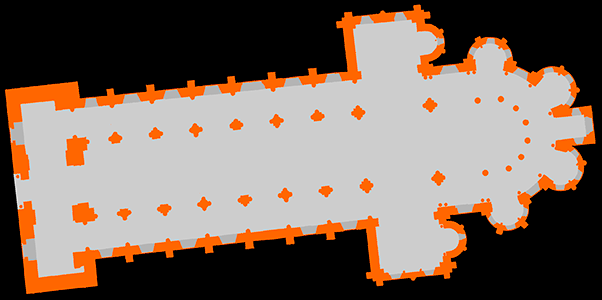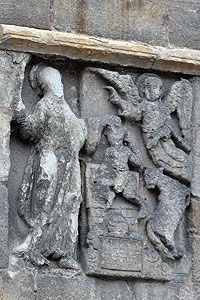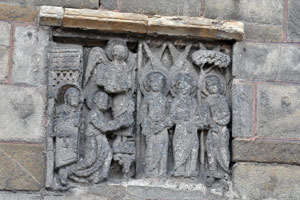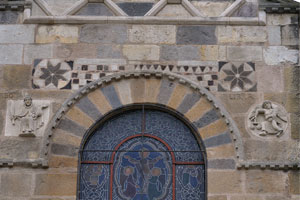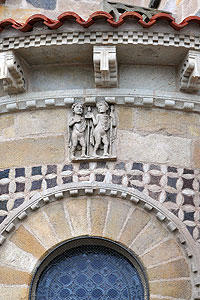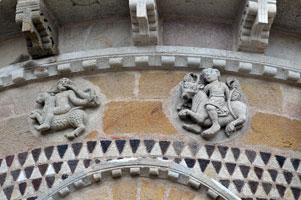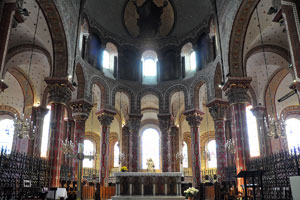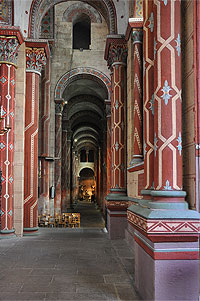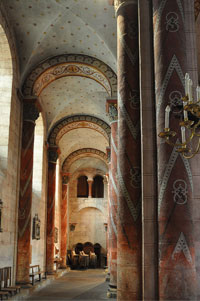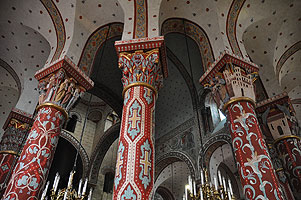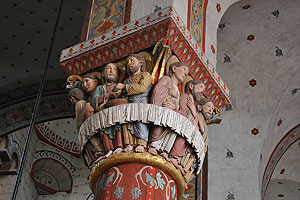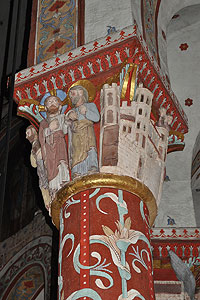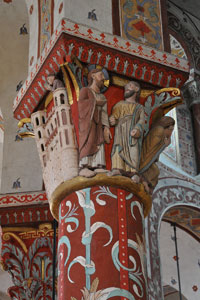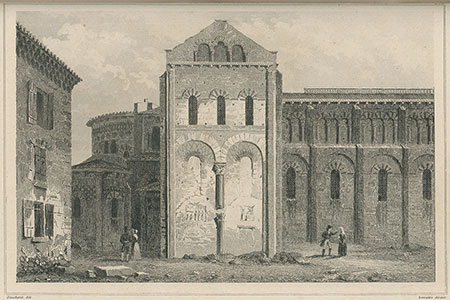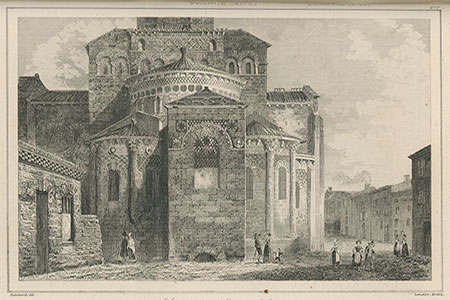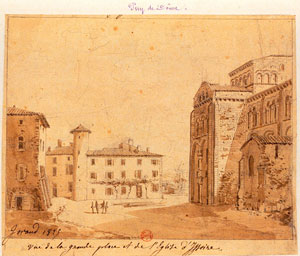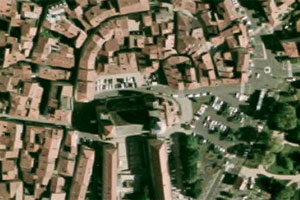The Benedictine abbey of Saint-Austremoine d’Issoire is dedicated to Saint Austromoine, considered the evangeliser of Auvergne. Very little is known about his life: he is thought to have lived in the 3rd century, although tradition places him in the apostolic era. His tomb is believed to have been at Issoire, where his relics were already venerated by the mid-3rd century. During the episcopate of Avitus II (676-691), bishop of Clermont, the relics were transferred to Volvic (Puy-de-Dôme) and, around 848, to Mozac (Puy-de-Dôme).
As for the monastery, a 9th-century text mentions a legendary foundation attributed to Austremonius himself, possibly of eremitic origin. That early establishment is said to have disappeared in 732 due to a Norman incursion. Beyond tradition, what is certain is that in 938 the abbey of Issoire was founded, or perhaps restored, by monks from Saint-Sauveur of Charroux (Vienne), who had taken refuge there following a new Norman invasion. It is also known that in 937 Bishop Bernard of Clermont had consecrated a church, earlier than the present one.
In the 14th century the abbey was still active, but the introduction of the commendatory system led to its decline. The last regular abbot was Guillaume de Rochefort, who served during the first quarter of the 15th century. In 1449 Robert Dauphin was appointed as the first commendatory abbot. In 1575, Issoire and its church were severely affected by the Wars of Religion. In 1665 it joined the Congregation of Saint-Maur, which brought new vitality. In the 18th century the buildings were restored, but monastic life came to an end with the Revolution of 1789 and, in 1791, its goods were sold.
Although details of its construction are lacking, the present church is considered to have been built in the 12th century. After suffering the effects of the Wars of Religion and the Revolution, conservation and restoration began in the 19th century, when new structures such as the façade and bell towers were erected. The result is a very spacious parish church, with three naves of seven bays, a narthex and a transept leading to the chevet, consisting of a large presbytery surrounded by an ambulatory with five radiating chapels. The interior repainting also dates from this period.
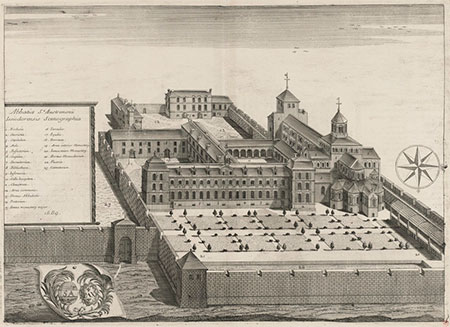
Monasticon Gallicanum
Bibliothèque nationale de France
- AUBERT, R. (1997). Dictionnaire d'histoire et de géographie ecclésiastiques. Vol. 26. París: Letouzey et Ané
- BAUDRILLART, Alfred (1931). Dictionnaire d'histoire et de géographie ecclésiastiques. Vol. 5. París: Letouzey et Ané
- BEAUNIER, Dom (1912). Abbayes et prieurés de l'ancienne France. Vol. 5. Bourges. Abbaye de Ligugé
- CHARDON DU RANQUET, Henri (1935). L'église abbatiale de Saint-Austremoine d'Issoire. Bulletin Monumental, vol. 94
- COEUR-MEURTRY, Atelier. Issoire. La Pierre-qui-Vire: Zodiaque, 1972
- CRAPLET, Bernard (1972). Auvergne romane. La nuit des temps, 2. Zodiaque
- GUÉRIN, Paul (1888). Les Petits Bollandistes. Vies des saints. Vol. 14. París: Bloud et Barral
- LE BAS, Philippe (1841). Historia de la Francia. Vol. 4. Barcelona: Imp. Nacional
- LONGY, Albert (1890). Histoire de la ville d'Issoire. Clermont-Ferrand: Mont-Louis
- MICHEL, Adolphe (1843). L'ancienne Auvergne et le Velay. Histoire, archéologie, moeurs, topographie IV. Atlas. Moulins
- NODIER, Charles (1833). Voyages pittoresques et romantiques dans l'ancienne France. Auvergne. París: Didot
- PEIGNÉ-DELACOURT, Achille (1877). Monasticon Gallicanum. Paris: G. Chamerot
- SAINT-MAUR, Congregació de (1720). Gallia Christiana in provincias ecclesiasticas distributa. Vol. 2. París: Typographia Regia
- TERRASSE, Charles (1925). Église d'Issoire. Congrès Archéologique de France. 87 ss. París: Picard
